In the bustling markets of Southeast Asia, the demand for efficient and reliable kitchen appliances, such as 220V fryer ovens, has surged. As businesses seek to enhance their culinary offerings, understanding the nuances of this market and its growth potential is crucial. This article delves into the factors shaping the 220V fryer oven market in SEA, offering insights into market trends, benefits of bulk purchasing, and the key considerations for businesses looking to invest in this vital equipment.
Introduction to 220V Fryer Oven Market in SEA
The Southeast Asian (SEA) region has seen a surge in the demand for 220V fryer ovens, as local and international businesses alike recognize the versatility and efficiency of these appliances. From bustling street food stalls to upscale restaurants, the 220V fryer oven has become a staple in the culinary landscape of the region. This introduction delves into the market dynamics, highlighting the key factors that have contributed to the popularity of these fryer ovens in SEA.
In recent years, the SEA region has experienced rapid urbanization and economic growth, leading to a significant increase in the middle class. This demographic shift has fueled a higher demand for processed and fried foods, which are both convenient and indulgent. As a result, the demand for fryer ovens, especially those that operate on a standard 220V voltage, has skyrocketed.
The 220V fryer oven market in SEA is characterized by a diverse range of products, catering to various price points and cooking requirements. From countertop models suitable for small-scale operations to large commercial fryers ideal for high-volume establishments, there is a wide array of options available. This variety ensures that businesses of all sizes can find a fryer oven that fits their needs and budget.
One of the primary drivers of the 220V fryer oven market in SEA is the preference for electric cooking solutions over traditional gas-based fryers. Electric fryers offer several advantages, including ease of use, consistent cooking temperatures, and cleaner operation. Additionally, the region’s power infrastructure is well-equipped to support the increased usage of electric appliances, further solidifying the market’s growth potential.
Another factor contributing to the market’s growth is the rise of fast-food chains and foodservice franchises in SEA. These chains often prefer to standardize their equipment across multiple locations to ensure consistency in food quality and cooking results. The 220V fryer oven, with its reliable performance and ease of integration into existing kitchen setups, has become a popular choice for these franchises.
The market for 220V fryer ovens in SEA is also influenced by the trend towards healthier eating. While fried foods are still in demand, consumers are increasingly seeking healthier alternatives. This has led to the development of fryer ovens that allow for healthier frying methods, such as using less oil or having adjustable temperature controls. These innovations are gaining traction among health-conscious consumers and businesses looking to offer more nutritious options.
In terms of distribution, the SEA region is served by a variety of suppliers and manufacturers, both domestic and international. Local brands often have a deeper understanding of the specific needs and preferences of the region’s consumers, while international players bring cutting-edge technology and global standards to the market.
The 220V fryer oven market in SEA is also marked by fierce competition, which has led to the introduction of innovative features and improved designs. Smart fryers with digital temperature controls, automatic oil filtration systems, and energy-saving capabilities are just a few examples of the advancements that have been made to meet the evolving demands of the market.
Despite the growth and opportunities, the market for 220V fryer ovens in SEA is not without its challenges. One of the most significant hurdles is the need for proper maintenance and safety training for restaurant staff. Incorrect usage or lack of maintenance can lead to appliance malfunctions and safety hazards, so education and training programs are crucial for ensuring the longevity and safety of these fryer ovens.
As the SEA region continues to grow and urbanize, the demand for 220V fryer ovens is expected to remain strong. The market is poised for further expansion as more businesses recognize the value of these appliances in enhancing their kitchen operations and meeting consumer expectations. The key to success in this dynamic market will be for manufacturers and suppliers to stay attuned to the changing needs of the region’s diverse customer base and to continue innovating in terms of design, features, and service offerings.
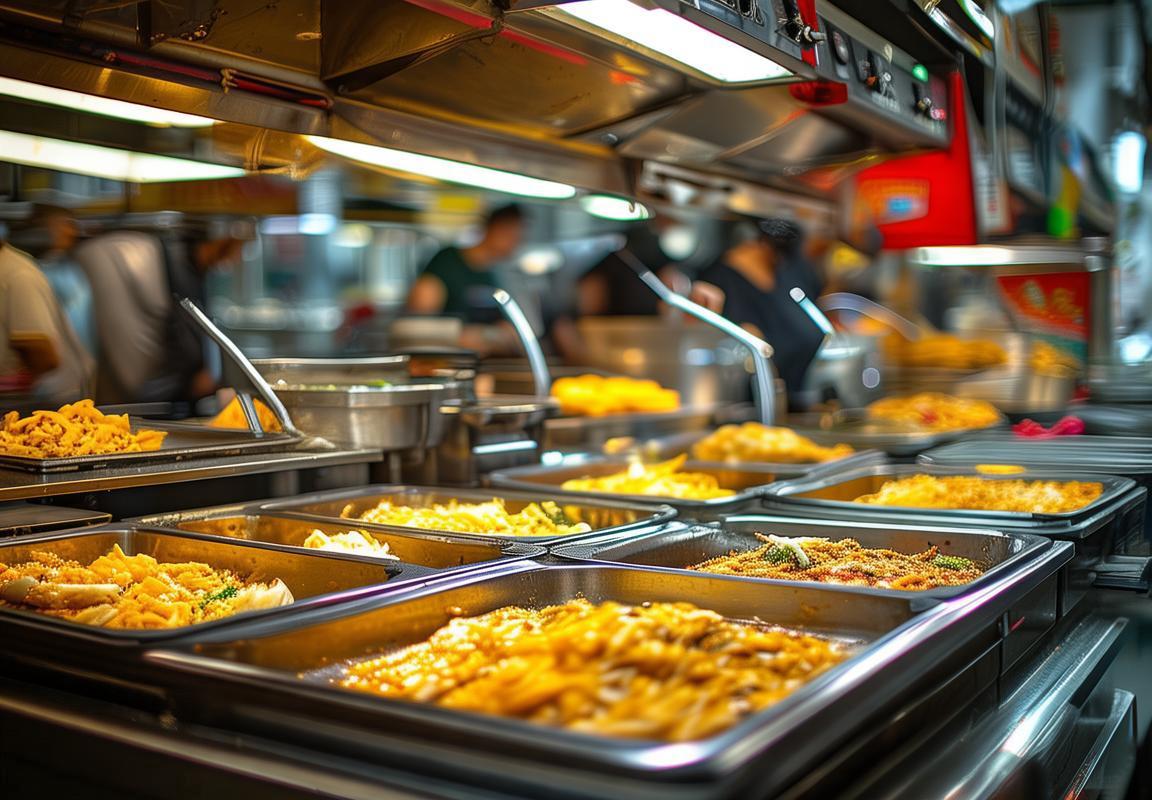
Understanding the Demand for 220V Fryer Ovens in Southeast Asia
In the bustling markets and vibrant kitchens of Southeast Asia, the demand for 220V fryer ovens has surged, reflecting a culinary landscape that values both efficiency and flavor. These appliances have become a staple in commercial kitchens across the region, from bustling street food stalls to upscale restaurants, and the reasons for their popularity are multifaceted.
The Southeast Asian culinary scene is a melting pot of diverse flavors, with each country offering its unique take on fried dishes. From the crispy, golden roti in Indonesia to the savory, crispy spring rolls in Vietnam, the region’s love for fried foods is undeniable. This preference has directly influenced the demand for fryer ovens, which are essential for achieving that perfect texture and crispiness.
Moreover, the growth of the foodservice industry in Southeast Asia has been nothing short of remarkable. With an increasing number of restaurants, cafes, and fast-food chains popping up in urban centers and tourist destinations, the need for efficient cooking equipment has intensified. 220V fryer ovens, with their ability to produce large quantities of fried food quickly, have become a go-to choice for operators looking to keep up with the high demand.
The versatility of these fryer ovens is another key factor driving demand. They can be used to fry a wide range of ingredients, from meats and vegetables to breaded items, making them incredibly versatile in the kitchen. This adaptability is particularly appealing to chefs and cooks who are always looking for new ways to create innovative dishes that cater to the region’s diverse palates.
Energy efficiency is also a significant consideration in the SEA market. As electricity costs can vary widely across the region, businesses are increasingly seeking appliances that offer both performance and cost-effectiveness. 220V fryer ovens are designed to operate efficiently, ensuring that energy is conserved without compromising on cooking quality.
The convenience factor cannot be overlooked. These fryer ovens are designed for ease of use, with features like adjustable temperature controls and removable baskets that make cleaning and maintenance a breeze. In a region where time is of the essence, the ability to quickly and easily fry large batches of food is a major draw for busy kitchens.
In terms of consumer trends, there’s a growing awareness of health and wellness. While fried foods are a staple, there’s also a demand for healthier options. 220V fryer ovens can be used to prepare a variety of low-fat or air-fried alternatives, addressing the needs of health-conscious consumers without sacrificing taste.
The rise of e-commerce has also played a role in the demand for 220V fryer ovens. Online platforms have made it easier for businesses to purchase these appliances, often at competitive prices. This accessibility has further fueled the market, as more small and medium-sized enterprises (SMEs) are able to invest in the necessary equipment to expand their operations.
Another important aspect is the cultural aspect of cooking. In many Southeast Asian cultures, cooking is a communal activity, and the act of frying is often shared among family and friends. The social aspect of cooking, combined with the convenience of fryer ovens, has made them a beloved tool in many households as well.
Lastly, the regional economic growth has had a direct impact on the demand for fryer ovens. As more people enter the middle class, there’s an increased disposable income that can be spent on improving their lifestyle, including upgrading kitchen appliances. This economic prosperity has contributed to the overall demand for high-quality, reliable fryer ovens.
In conclusion, the demand for 220V fryer ovens in Southeast Asia is a result of a combination of factors, including the region’s love for fried foods, the growth of the foodservice industry, the need for energy-efficient appliances, and the cultural and economic shifts that are shaping the culinary landscape. As the market continues to evolve, it’s clear that the demand for these versatile and efficient fryer ovens will remain strong.
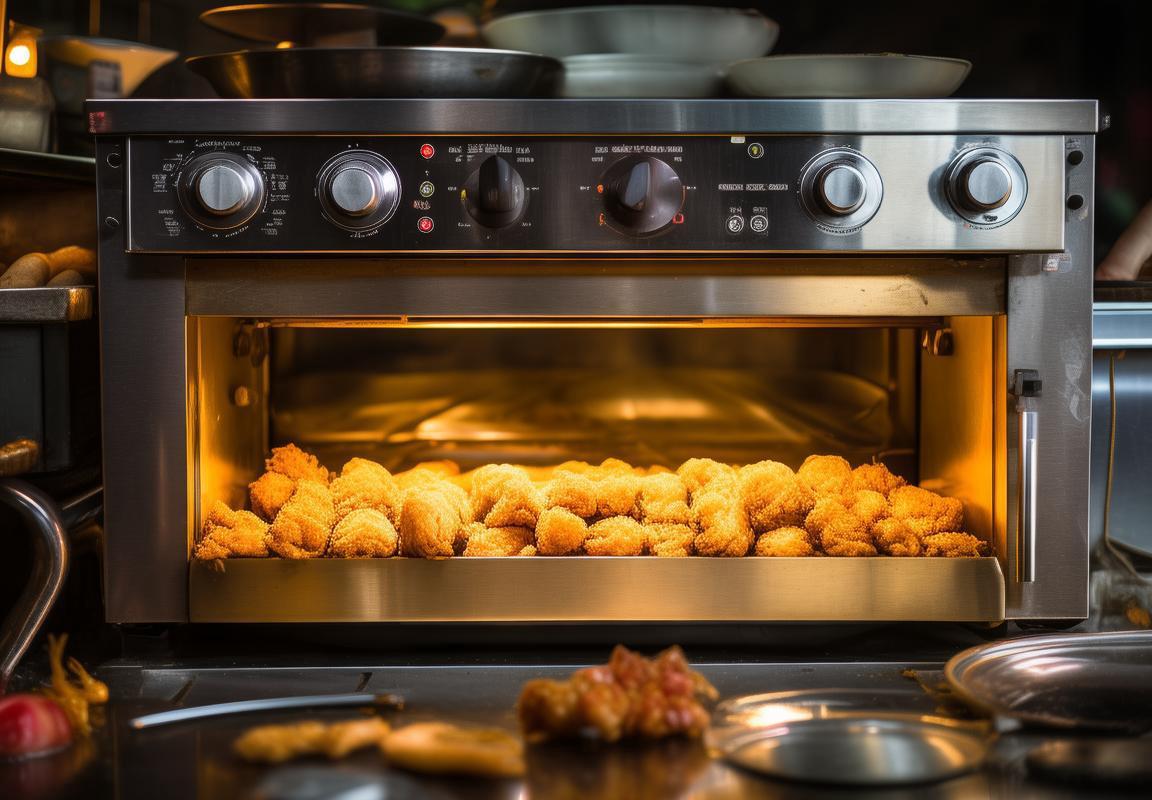
Market Trends and Growth Drivers in the SEA Region
In the Southeast Asian (SEA) region, the market for 220V fryer ovens is experiencing a surge in demand, fueled by a combination of evolving consumer preferences, technological advancements, and the dynamic culinary landscape. This growth is not only shaping the market but also influencing the types of fryer ovens being sought after.
Culinary Fads and Fusion TrendsThe SEA region is a melting pot of diverse cultures, which has given rise to a thriving food industry that is increasingly embracing fusion cooking. This culinary revolution is pushing restaurants and commercial kitchens to adopt fryer ovens that can handle a variety of cooking methods, from deep-frying to grilling and even baking. As a result, the demand for fryer ovens with adjustable temperatures and multi-functional capabilities is on the rise.
Rise of Fast-Casual and Coffee Shop CultureThe popularity of fast-casual dining and coffee shops in SEA has skyrocketed in recent years. These establishments require fryer ovens that can produce high-quality food quickly and efficiently. The convenience of electric fryer ovens, which can be easily integrated into small kitchen spaces, has made them a preferred choice for these venues. The demand for energy-efficient models is particularly high, as these businesses aim to reduce operating costs.
Health and Wellness AwarenessA growing awareness of health and wellness is reshaping the food industry in SEA. Consumers are increasingly looking for healthier alternatives to fried foods, which has spurred the demand for fryer ovens that can cook healthier options like air-fried or baked foods. This shift towards healthier eating habits is driving the market for fryer ovens with adjustable cooking settings to cater to this new trend.
Technology and InnovationAdvancements in technology are continuously pushing the boundaries of what fryer ovens can do. Smart fryer ovens equipped with features like programmable timers, temperature controls, and automated shut-offs are becoming more popular. These innovations not only enhance safety but also improve the cooking process, ensuring consistent results. As a result, technology-driven growth is a significant driver of the market in the region.
Sustainability and Eco-Friendly SolutionsSustainability is a hot topic across SEA, and the food industry is not immune to this trend. There is a growing demand for fryer ovens that are energy-efficient and eco-friendly. With the rise of environmentally conscious consumers and governments promoting green initiatives, businesses are looking for fryer ovens that not only perform well but also contribute to a lower carbon footprint.
Urbanization and Growing PopulationThe rapid urbanization in SEA has led to a concentration of people in urban areas, where demand for food services is high. As the population continues to grow, so does the need for commercial kitchen equipment that can handle the increased volume of food production. This urban expansion is a strong driver behind the market’s growth, as it necessitates the availability of efficient and reliable fryer ovens.
E-commerce and Online SalesThe e-commerce boom in SEA has changed the way businesses purchase equipment. Online platforms have made it easier for restaurant owners and commercial kitchen operators to source fryer ovens directly from manufacturers or authorized dealers. This streamlined process has increased accessibility and competition in the market, driving innovation and price competition among manufacturers.
International Expansion of Global BrandsGlobal fryer oven brands are expanding into the SEA market, bringing with them new technologies and designs. This internationalization is introducing new customers to the benefits of advanced fryer oven models and is influencing local manufacturers to improve their offerings. The presence of these global players is not only driving market growth but also setting new standards for product quality and efficiency.
Economic Growth and Consumer Spending PowerThe economic growth in SEA has lifted the purchasing power of consumers, allowing them to invest in higher-quality fryer ovens for their commercial kitchens. This upward mobility is contributing to the overall growth of the market, as businesses seek to upgrade their equipment to match the growing expectations of their customers.
ConclusionThe market trends and growth drivers in the SEA region for 220V fryer ovens are multifaceted, ranging from culinary trends and consumer preferences to technological advancements and environmental concerns. As these factors continue to evolve, the fryer oven market in SEA is poised for sustained growth, with a focus on innovation, efficiency, and sustainability.
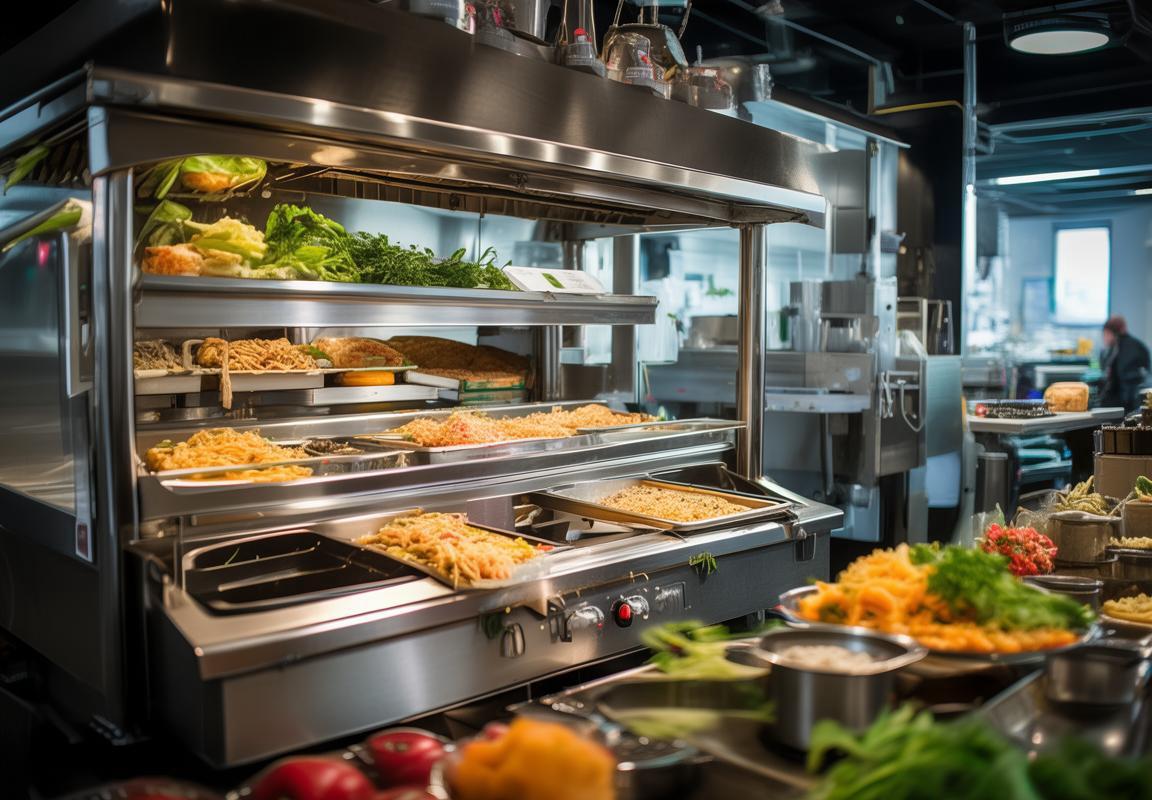
Benefits of Bulk Purchasing 220V Fryer Ovens for SEA Businesses
Bulk purchasing 220V fryer ovens for businesses in Southeast Asia (SEA) can offer a multitude of advantages that extend beyond just cost savings. Here’s an in-depth look at some of the key benefits:
-
Cost Efficiency: One of the most immediate benefits of buying in bulk is the significant cost savings. Manufacturers often provide substantial discounts for large orders, which can be a substantial saving for businesses looking to outfit multiple kitchens or expand their operations.
-
Negotiated Pricing: With a bulk purchase, businesses have the leverage to negotiate better pricing. This can include not only discounts but also favorable payment terms, extended warranties, or additional services like installation or training.
-
Consistency in Quality: When purchasing in bulk, businesses can ensure consistency in the quality of the fryer ovens. This is particularly important for restaurants and food service providers where a consistent product quality is crucial for maintaining customer satisfaction and brand reputation.
-
Reduced Lead Times: Bulk orders can often be prioritized by manufacturers, resulting in shorter lead times. This can be a game-changer for businesses that need to restock their inventory quickly or are preparing for a high-demand period.
-
Streamlined Supply Chain: By consolidating suppliers and purchasing in bulk, businesses can streamline their supply chain. This can lead to more efficient inventory management, reduced administrative overhead, and a simpler procurement process.
-
Customization Opportunities: Bulk purchasing may open doors to customization. For businesses with specific needs or branding requirements, manufacturers might be more willing to accommodate special requests when a large order is placed.
-
Long-Term Cost Savings: The initial investment in bulk purchasing can lead to long-term cost savings. Over time, the reduced cost per unit, combined with the potential for economies of scale, can contribute to a more sustainable bottom line.
-
Enhanced Market Positioning: For businesses looking to differentiate themselves in a competitive market, bulk purchasing can be a strategic move. It can signal to customers that the business is committed to quality and efficiency, which can enhance brand image and customer loyalty.
-
Resource Allocation: With a bulk purchase, businesses can allocate their resources more effectively. Instead of spreading their budget across multiple small purchases, they can invest in a higher quality product that meets all their needs.
-
Training and Support: Manufacturers who sell in bulk often provide additional support, such as training sessions for staff or troubleshooting assistance. This can be invaluable for businesses that want to ensure their fryer ovens are used to their full potential.
-
Market Trends and Future Readiness: Bulk purchasing can also help businesses stay ahead of market trends. By investing in a larger inventory, they can respond more quickly to changes in consumer demand or menu offerings.
-
Environmental Impact: Buying in bulk can also have a positive environmental impact. By reducing packaging and minimizing the number of shipments, businesses can contribute to a more sustainable approach to commerce.
-
Easier Inventory Management: With a bulk purchase, inventory management becomes simpler. Businesses can track their usage more easily and avoid the complexities of managing multiple suppliers and stock levels.
-
Risk Mitigation: In the event of a product recall or a shortage in the market, having a bulk purchase can mitigate risks. Businesses won’t be left without the necessary equipment to continue operations.
-
Brand Partnerships: For some businesses, bulk purchasing can lead to stronger partnerships with manufacturers. This can result in preferential treatment, early access to new products, and a sense of exclusivity.
In conclusion, the benefits of bulk purchasing 220V fryer ovens for SEA businesses are multifaceted, offering both immediate and long-term advantages that can contribute to overall business success and growth.
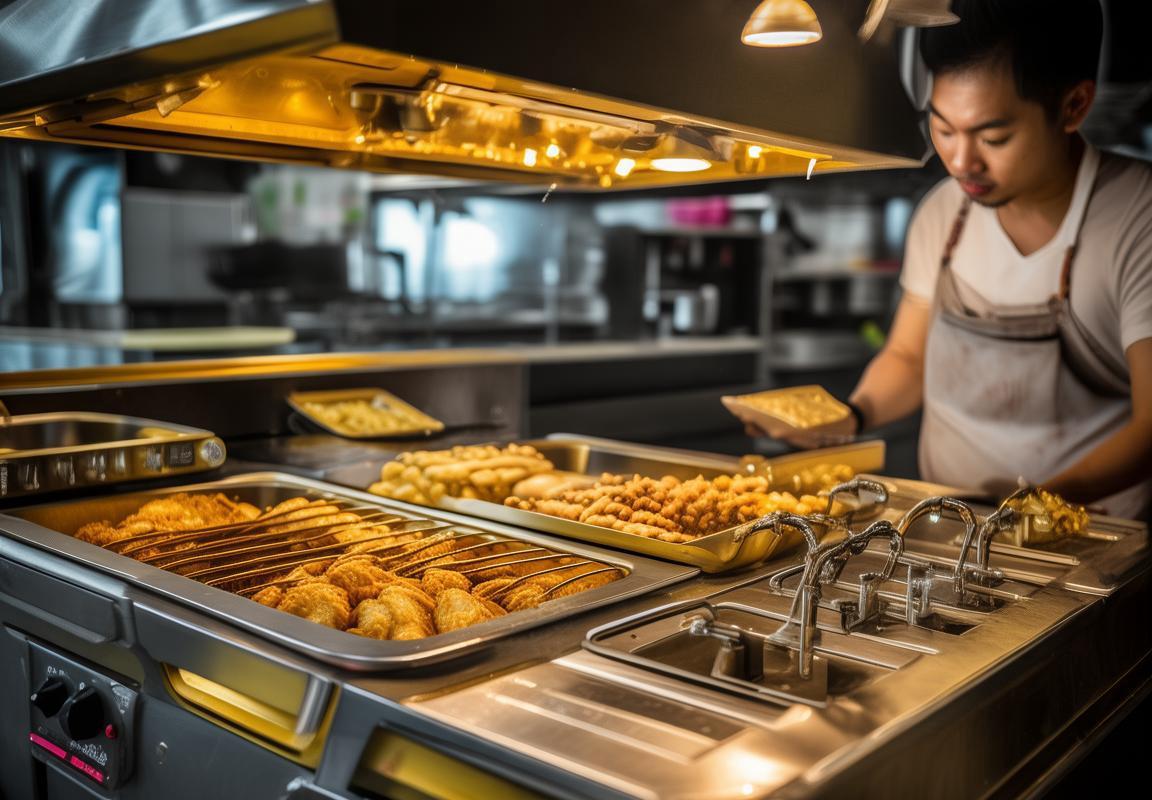
Key Features to Consider When Buying 220V Fryer Ovens in Bulk
When making a bulk purchase of 220V fryer ovens for businesses in Southeast Asia (SEA), it’s crucial to consider several key features that will ensure efficiency, reliability, and safety. Here are some important aspects to look out for:
Efficiency and Cooking Performance– Look for fryer ovens with advanced heating elements that distribute heat evenly, ensuring consistent cooking results and reducing energy consumption.- Consider models with adjustable temperature controls to cater to different types of food and achieve optimal frying temperatures.- Some fryers come with timers and programmable settings, allowing for hands-free cooking and precise control over the frying process.
Capacity and Size– Assess the capacity of the fryer oven to ensure it meets the needs of your business, whether it’s a small café or a large restaurant.- Pay attention to the size of the fryer oven, as it should fit comfortably in your kitchen space without causing overcrowding.- Ensure the fryer oven can handle the volume of food you expect to cook during peak hours.
Construction and Materials– Choose fryer ovens made with durable materials like stainless steel, which are easy to clean and resistant to corrosion.- Look for ovens with thick insulation to maintain temperature and reduce heat loss, leading to energy savings.- Ensure the fryer has a robust design, with secure handles and stable legs to prevent accidents and ensure long-term use.
Safety Features– Safety should be a top priority, so look for fryer ovens equipped with overheat protection to prevent damage and fires.- Consider models with a child safety lock or a lockable door to prevent accidental operation.- Check for features like a non-slip base and a secure hinge design to reduce the risk of spills and accidents.
Energy Efficiency– Energy efficiency is a significant factor, especially when purchasing in bulk. Look for fryer ovens with a high energy efficiency rating (EER) to reduce utility costs.- Some fryer ovens come with features like an energy-saving mode or a smart heating system that optimizes energy usage.- Investigate the lifespan of the heating elements, as longer-lasting elements can contribute to lower energy costs over time.
Cleaning and Maintenance– A fryer oven that is easy to clean and maintain can save you time and effort. Look for models with removable parts for easy cleaning and stainless steel surfaces that resist food particles.- Consider fryer ovens with self-cleaning capabilities, such as a catalytic converter or a stainless steel lining that helps reduce grease buildup.- Check the warranty and after-sales service provided by the manufacturer, as regular maintenance can extend the life of the appliance.
Brand Reputation and Support– The reputation of the brand can be an indicator of the quality and reliability of the fryer oven. Look for brands with a strong presence in the market and a history of producing high-quality commercial kitchen equipment.- Ensure the manufacturer offers comprehensive support, including customer service, technical assistance, and spare parts availability.- Consider the availability of training programs or installation services, especially if you are purchasing fryer ovens in bulk for new employees or to set up a new kitchen.
Cost vs. Value– While the initial cost is important, it’s equally crucial to consider the overall value provided by the fryer oven. This includes the cost of operation, maintenance, and the expected lifespan of the appliance.- Compare the features and benefits of different models to determine which one offers the best value for your investment.- Factor in any potential savings from bulk purchases, such as volume discounts or bundled packages that include additional accessories.
By carefully considering these key features when buying 220V fryer ovens in bulk for your SEA business, you can ensure that you are making a smart and cost-effective investment that will serve your operation well for years to come.
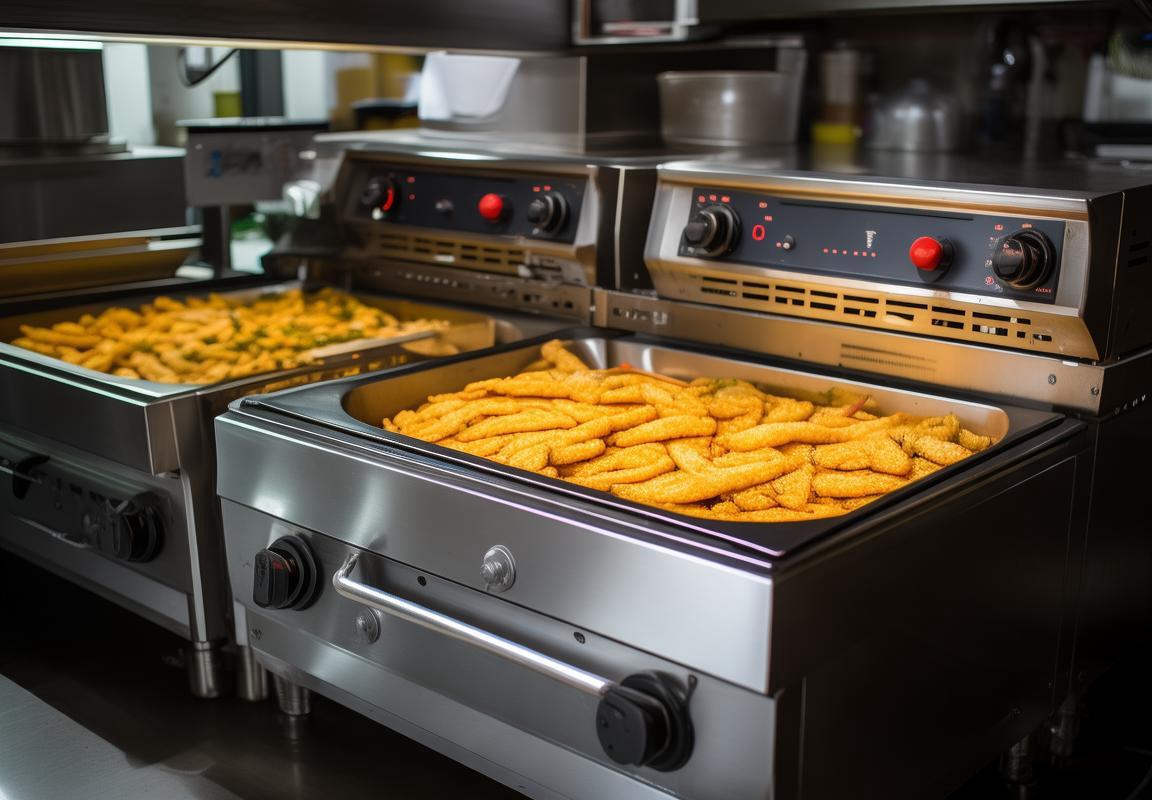
Comparative Analysis of Leading Brands and Models
In the competitive landscape of 220V fryer ovens, several leading brands and models stand out for their quality, efficiency, and innovation. Here’s a comparative analysis of some of these key players in the market:
-
The Efficiency of Industrial Grade Ovens: Industrial-grade fryer ovens from brands like Falcon, Blodgett, and Alto-Shaam are renowned for their high-efficiency designs. These ovens often come with advanced heat distribution systems that ensure even cooking, reducing energy consumption and increasing productivity.
-
Innovative Cooking Technologies: Brands like TurboChef and Convotherm offer fryer ovens with innovative technologies like convection, infrared, and impingement heating. These methods not only cook faster but also preserve more nutrients and flavor compared to traditional deep fryers.
-
Customization and Scalability: When purchasing in bulk, businesses often look for fryer ovens that can scale with their operations. Brands like Retherm and Alto-Shaam offer customizable options, allowing for adjustments in size and features based on the specific needs of the establishment.
-
Durability and Reliability: A fryer oven is a significant investment, so durability and reliability are crucial. Brands such as Middleby Marshall and Hatco are known for their robust construction and long-lasting performance, ensuring minimal downtime and a lower cost of ownership over time.
-
Safety Features: Safety is paramount in commercial kitchens, especially when dealing with hot oils and high temperatures. Brands like Manitowoc and Traulsen provide fryer ovens with multiple safety features, including automatic shut-off, overheating protection, and oil filtration systems.
-
Energy Savings: With rising energy costs, many businesses are seeking fryer ovens that offer significant energy savings. Manufacturers like Alto-Shaam and Retherm are at the forefront, offering fryer ovens with energy-saving capabilities that can lead to substantial cost savings over the long term.
-
User-Friendly Controls: Modern fryer ovens come with advanced control panels that simplify operation and ensure consistent results. Brands like TurboChef and Convotherm are recognized for their intuitive interfaces, which make it easier for kitchen staff to adjust settings and monitor cooking processes.
-
Versatility: Some fryer ovens are designed to be versatile, allowing for a range of cooking methods beyond just frying. Brands like Retherm offer multi-functional units that can also perform grilling, broiling, and even steaming, offering businesses more flexibility in their menu offerings.
-
after-sales Service: When buying in bulk, the quality of after-sales service can be just as important as the product itself. Leading brands like Hatco and Manitowoc provide comprehensive service networks, including installation, maintenance, and spare parts availability, ensuring that businesses can maintain their fryer ovens in optimal condition.
-
Eco-Friendly Options: As sustainability becomes a more critical factor in purchasing decisions, some brands are offering eco-friendly fryer ovens. Companies like Alto-Shaam have introduced models that use less oil and have more efficient filtering systems, reducing waste and environmental impact.
-
Customer Reviews and Recommendations: When considering bulk purchases, it’s essential to look at customer reviews and recommendations. Brands like Falcon and Blodgett have a strong presence in the market and are often praised for their customer service and product reliability.
In summary, when looking at the comparative analysis of leading brands and models of 220V fryer ovens, it’s clear that each offers unique benefits tailored to different operational needs. From efficiency and safety to versatility and sustainability, these factors should be carefully considered to ensure the best investment for any commercial kitchen.
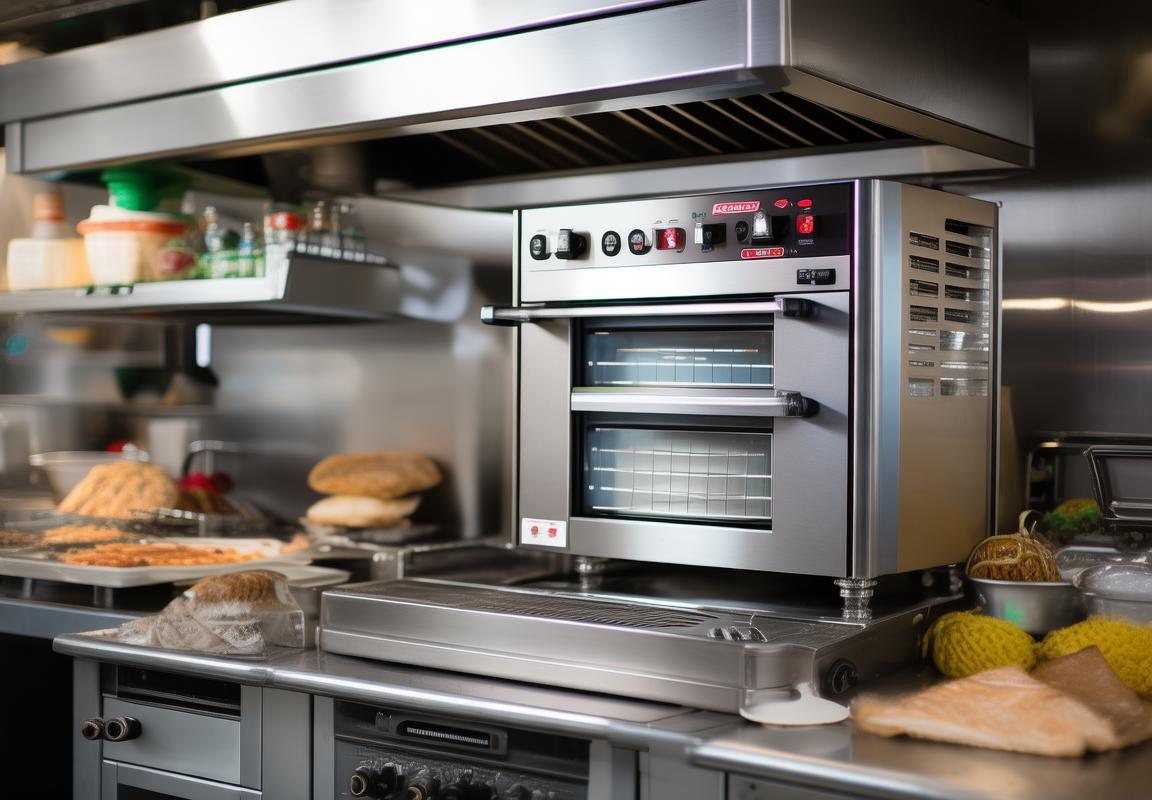
Navigating Logistics and Distribution Challenges
Understanding the complexities of logistics and distribution is crucial for businesses looking to import and distribute 220V fryer ovens in Southeast Asia (SEA). Here are some of the key challenges and considerations to keep in mind:
-
Customs Regulations and ComplianceNavigating the customs landscape in SEA can be a maze of regulations and documentation. Each country has its own set of import rules, tariffs, and restrictions. Ensuring that all 220V fryer ovens comply with local electrical standards and safety regulations is paramount. This involves not only understanding the technical specifications but also coordinating with local authorities to obtain the necessary certifications and permits.
-
Transportation and RoutingSEA is a vast and diverse region, with varied transportation infrastructure. From bustling ports to less developed rural areas, the logistics of transporting bulk fryer ovens can be challenging. Choosing the right mode of transport—be it sea, air, or road—depends on factors like cost, speed, and the final destination. Road transport, for instance, might be ideal for shorter distances or when flexibility is needed to reach specific markets.
-
Container Loading and PackagingEfficient loading and packaging are essential to prevent damage during transit. 220V fryer ovens are not only heavy but also delicate. Ensuring that they are properly crated and secured in containers is crucial to minimize the risk of damage. This often requires specialized knowledge of cargo handling and protection, especially for appliances that are sensitive to vibrations or temperature fluctuations.
-
Warehouse Storage and Inventory ManagementOnce the fryer ovens arrive at their destination, they need to be stored in a warehouse. Proper storage conditions are vital to maintain the quality of the products. This includes temperature control, humidity management, and security measures to prevent theft or unauthorized access. Inventory management systems must also be in place to track stock levels, manage orders, and prevent overstocking or stockouts.
-
Last-Mile DeliveryThe final stage of distribution is the delivery to the end-user or retailer. In SEA, this can be particularly challenging due to the diversity of local markets and the often inadequate infrastructure in some areas. Finding reliable local partners who can handle last-mile delivery is critical. This requires an understanding of the local transportation networks and the ability to coordinate with a variety of service providers.
-
Language and Cultural BarriersCommunication can be a significant hurdle in logistics. Different languages and cultural nuances can lead to misunderstandings or delays. Employing staff or partners who are fluent in the local languages and have a deep understanding of the culture can help bridge these gaps. This ensures that all parties are on the same page regarding delivery timelines, payment terms, and customer service expectations.
-
Regulatory Compliance and DocumentationEach country in SEA has its own set of regulations and documentation requirements. Keeping track of these and ensuring compliance is a continuous challenge. This includes understanding local trade agreements, import/export controls, and any specific requirements for importing electrical appliances. Mistakes in documentation can lead to delays, fines, or even the refusal of goods at customs.
-
Emerging Technologies and SolutionsThe logistics and distribution landscape is constantly evolving. Embracing emerging technologies, such as blockchain for tracking and verifying the authenticity of goods, or the use of drones for delivery in remote areas, can offer innovative solutions to traditional challenges. Staying informed about these advancements and integrating them into the distribution strategy can provide a competitive edge.
-
Risk Management and Contingency PlanningThe nature of logistics means that unexpected events can and do occur. Natural disasters, political instability, or supply chain disruptions can impact delivery schedules. Having robust risk management protocols and contingency plans in place is essential to mitigate these risks and maintain business continuity.
-
Cost OptimizationOptimizing costs without compromising quality or service is a constant challenge in logistics. This involves finding the right balance between transportation costs, warehousing fees, and the cost of employing skilled personnel. Regularly reviewing and renegotiating contracts with suppliers and service providers can help keep costs under control.
-
Sustainability and Environmental ConcernsAs awareness of environmental issues grows, businesses are increasingly expected to consider the sustainability of their logistics operations. This includes choosing eco-friendly transportation methods, reducing packaging waste, and ensuring that all practices align with environmental regulations and corporate social responsibility (CSR) goals.
In conclusion, navigating the logistics and distribution challenges of importing 220V fryer ovens in SEA requires a nuanced understanding of local markets, a commitment to compliance, and a forward-thinking approach to transportation and supply chain management. By addressing these challenges head-on, businesses can ensure efficient operations and meet the demands of a rapidly growing market.

Cost-Effective Strategies for SEA Bulk Purchases
When it comes to making bulk purchases in the Southeast Asian (SEA) region, especially for 220V fryer ovens, cost-effectiveness is a pivotal factor. Here are some strategies that can help businesses secure the best deals without compromising on quality or efficiency:
1. Research and Compare SuppliersBefore diving into bulk purchases, it’s crucial to conduct thorough research on suppliers. Look for manufacturers and distributors that offer competitive pricing without sacrificing the quality of the fryer ovens. Compare quotes, negotiate terms, and consider long-term partnerships that may provide volume discounts.
2. Leverage Bulk DiscountsOne of the most straightforward ways to achieve cost-effectiveness is by taking advantage of bulk discounts. Suppliers often offer reduced prices per unit when purchasing in large quantities. Ensure that the volume you’re considering aligns with your inventory needs and sales projections to maximize these discounts.
3. Evaluate Long-Term CostsWhile it’s tempting to focus solely on the upfront cost, it’s equally important to consider the long-term costs associated with the fryer ovens. This includes maintenance, energy consumption, and potential repairs. Opt for models that are known for their durability and energy efficiency to reduce overall expenses over time.
4. Opt for Standardized ModelsStandardizing on a single model across your inventory can simplify the purchasing process and potentially lead to volume discounts. It also makes it easier to manage parts and service requirements. When all fryer ovens are from the same brand and model, it streamlines maintenance and training for staff.
5. Consider Local ManufacturingBuying locally manufactured products can sometimes be more cost-effective, especially in the SEA region. Local manufacturers may offer competitive pricing due to lower transportation costs and a better understanding of the local market needs. This can also reduce lead times and improve customer service.
6. Look into Financing OptionsFor businesses that require a significant upfront investment, exploring financing options can be beneficial. Leasing or financing the purchase of fryer ovens can spread out the costs over time, making it more manageable for your cash flow. Always read the fine print to understand any interest rates or additional fees involved.
7. Invest in Quality PackagingWhen dealing with bulk purchases, the packaging of the goods is crucial. High-quality packaging not only protects the fryer ovens during transit but can also reduce the risk of damage, which could lead to additional costs. Ensure that the packaging is sturdy and suitable for the transportation method you choose.
8. Plan for Seasonal DemandsUnderstanding the seasonal fluctuations in demand for fryer ovens can help you time your bulk purchases strategically. Buying during off-peak seasons might lead to better deals as suppliers are looking to move inventory. Conversely, purchasing during peak seasons may require paying a premium, so it’s essential to plan accordingly.
9. Stay Informed About Market TrendsKeeping abreast of market trends can provide insights into when prices may be favorable. Economic factors, such as currency fluctuations or changes in raw material costs, can impact pricing. By staying informed, you can make more informed decisions about when to make bulk purchases.
10. Build Strong Relationships with SuppliersEstablishing strong relationships with suppliers can lead to better terms over time. Suppliers may be more willing to offer discounts or provide additional services, such as training or after-sales support, to loyal customers. Building a rapport can also make it easier to negotiate during bulk purchase negotiations.
By implementing these strategies, businesses in the SEA region can secure cost-effective bulk purchases of 220V fryer ovens, ensuring they get the best value for their investment while maintaining the quality and efficiency of their kitchen equipment.

Regulatory Compliance and Safety Standards
Understanding the intricacies of regulatory compliance and safety standards is paramount when engaging in bulk purchases of 220V fryer ovens for the Southeast Asian (SEA) market. The region’s diverse set of regulations, coupled with the varying safety standards, can significantly impact the operational and legal landscape for businesses. Here’s a closer look at these critical aspects:
Complexity of Regional Regulations:Regional regulations in SEA can vary greatly from one country to another, making it a challenge to ensure that the fryer ovens meet all necessary requirements. For instance, electrical safety standards in Thailand may differ from those in Indonesia, which in turn may differ from those in the Philippines. Each country has its own set of codes and certifications that must be adhered to.
Electrical Safety Standards:Electrical safety is a cornerstone of product compliance. Fryer ovens operate on high voltages, which necessitates adherence to stringent electrical safety standards. In SEA, this often means certifications such as CE Marking, which signifies that the product complies with the essential health and safety requirements of the European Union. Additionally, businesses must ensure that their fryer ovens meet local standards such as the Australian-New Zealand (AS/NZS) or the Thai Industrial Standards (TIS).
Fire Safety and Preventive Measures:Fire safety is a critical concern for fryer ovens due to their potential to cause fires. Regulations often require fryer ovens to have specific fire-resistant components, such as cooking pots made from non-combustible materials. Additionally, features like automatic shut-off systems and fire suppression mechanisms may be mandatory. Compliance with these requirements is not just about meeting legal standards but also about ensuring the safety of customers and staff.
Sanitation and Hygiene Regulations:Food safety is a top priority in the foodservice industry, and fryer ovens must meet stringent sanitation and hygiene regulations. This includes the material from which the oven is constructed, as well as the ease of cleaning. Materials that are resistant to corrosion and easy to sanitize are often preferred. Moreover, ovens should be designed to prevent cross-contamination between different types of food products.
Energy Efficiency Regulations:Energy efficiency is gaining importance in many SEA countries. Fryer ovens that consume less energy can lead to significant cost savings and environmental benefits. Regulations may require ovens to have certain energy efficiency ratings, which can be confirmed through certifications like the Energy Star label or local equivalents.
Labeling and Product Information:Clear and accurate labeling is essential for compliance. Ovens must be labeled with information such as voltage, power consumption, and safety warnings. This information helps users understand how to safely operate the equipment and what to expect in terms of energy use and performance.
Certifications and Audits:Obtaining certifications from recognized bodies is a key step in ensuring regulatory compliance. This may involve third-party audits to verify that the fryer ovens meet all relevant standards. Certifications like ISO 9001 for quality management and ISO 22000 for food safety management systems can add credibility and assurance to the products.
Compliance Challenges and Solutions:Challenges in compliance often arise from the complexity of navigating different regulations. Businesses can overcome these challenges by:
- Establishing a dedicated compliance team or working with experts who understand the local regulations.
- Maintaining close communication with suppliers to ensure that products are up-to-date with the latest standards.
- Investing in training for staff to ensure they are aware of the importance of compliance and understand the procedures in place.
- Keeping abreast of any changes in regulations and adapting supply chains accordingly.
Conclusion:Navigating the regulatory compliance and safety standards for 220V fryer ovens in the SEA region is a complex task that requires a thorough understanding of the local landscape. By prioritizing compliance, businesses can not only avoid legal repercussions but also build trust with customers and stakeholders, ensuring long-term success in the competitive market.
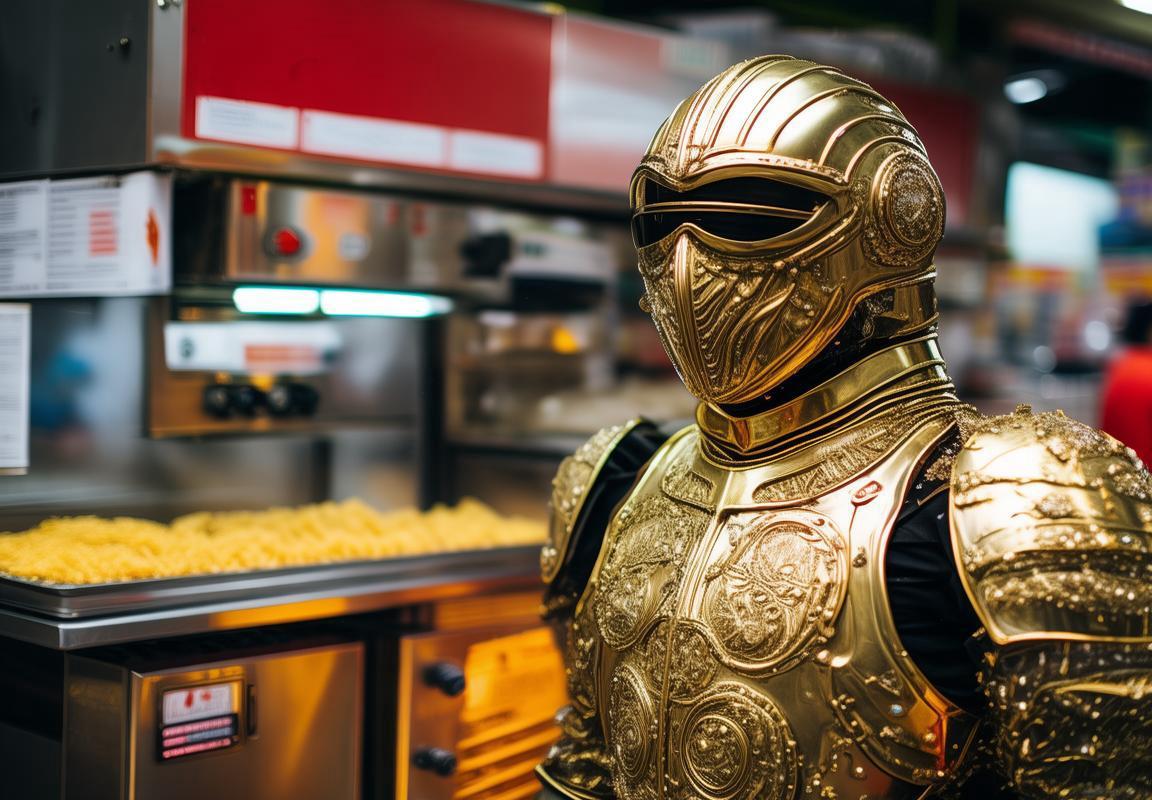
Conclusion: Future Prospects and Recommendations for 220V Fryer Oven Bulk Purchases in SEA
In conclusion, the future of 220V fryer oven bulk purchases in Southeast Asia is poised for significant growth, driven by a confluence of factors that promise both innovation and challenges. As businesses in the region continue to seek efficient and cost-effective solutions for their commercial kitchens, the demand for high-quality fryer ovens is expected to soar. Here are some key considerations and recommendations for navigating this evolving landscape:
The increasing urbanization and growth of the middle class in Southeast Asia have led to a surge in demand for fast-food and casual dining options. This shift in consumer preferences has necessitated a higher capacity for frying, which in turn has spurred the need for more advanced and reliable fryer ovens. As such, businesses looking to capitalize on this trend should prioritize models that offer scalability and versatility.
Additionally, with the rise of health consciousness among consumers, there is a growing interest in healthier cooking methods. While traditional fryer ovens are not typically associated with health, innovations such as oil filtration systems and programmable temperature controls are making these appliances more appealing to health-conscious diners. Suppliers and buyers alike should keep an eye on these advancements as they could shape the future of fryer oven technology.
The importance of sustainability cannot be overstated, especially in a region that is increasingly vulnerable to environmental challenges. Eco-friendly fryer ovens that consume less energy and reduce waste are likely to become more popular. Businesses that prioritize sustainability in their procurement decisions may find themselves ahead of the curve, both in terms of public perception and operational efficiency.
When it comes to purchasing fryer ovens in bulk, collaboration with reputable suppliers is crucial. These suppliers should not only offer a wide range of high-quality products but also provide excellent customer service and support. Establishing long-term relationships with suppliers can lead to better pricing, quicker delivery times, and access to exclusive deals.
In the context of bulk purchases, it’s also important to consider the logistics of transportation and distribution. Ensuring that fryer ovens are delivered in perfect condition and on time is essential to avoid business disruptions. Buyers should seek out suppliers who have a robust logistics network and can provide real-time tracking of shipments.
The competitive landscape of fryer oven brands in Southeast Asia is diverse, with several international and regional players vying for market share. Each brand offers unique features and benefits, making it essential for buyers to conduct thorough research. Some brands may excel in durability and reliability, while others may focus on innovative technology and energy efficiency. By comparing these factors, businesses can make informed decisions that align with their specific needs and goals.
Lastly, as the market for 220V fryer ovens in Southeast Asia continues to expand, it’s important to stay informed about the latest industry trends and technological advancements. Continuous learning and adaptation will be key to staying competitive and meeting the evolving demands of the market.
In summary, the future of 220V fryer oven bulk purchases in Southeast Asia is bright, but it requires strategic planning and a keen eye for detail. By focusing on quality, sustainability, collaboration, and staying informed, businesses can position themselves for success in this dynamic market. Whether it’s through investing in eco-friendly models, partnering with reliable suppliers, or embracing innovative technologies, the opportunities for growth are vast. As the region continues to develop, those who navigate these opportunities wisely will be well-positioned to lead the industry into the future.